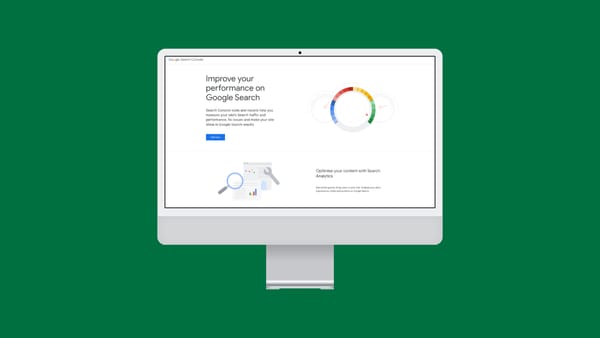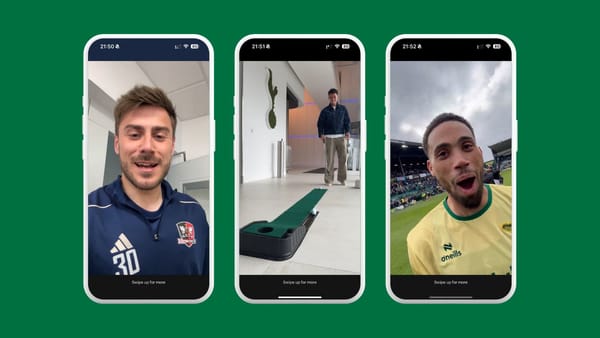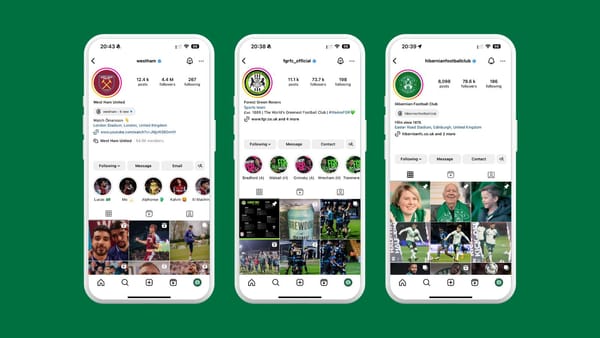Getting started in football marketing, email lessons from MLS and the Bundesliga, and how to increase your club's accessibility
Want to work in football marketing? A new book has you covered. Plus see how MLS and the Bundesliga handle their email marketing, and learn how your club can be more accessible online and offline.
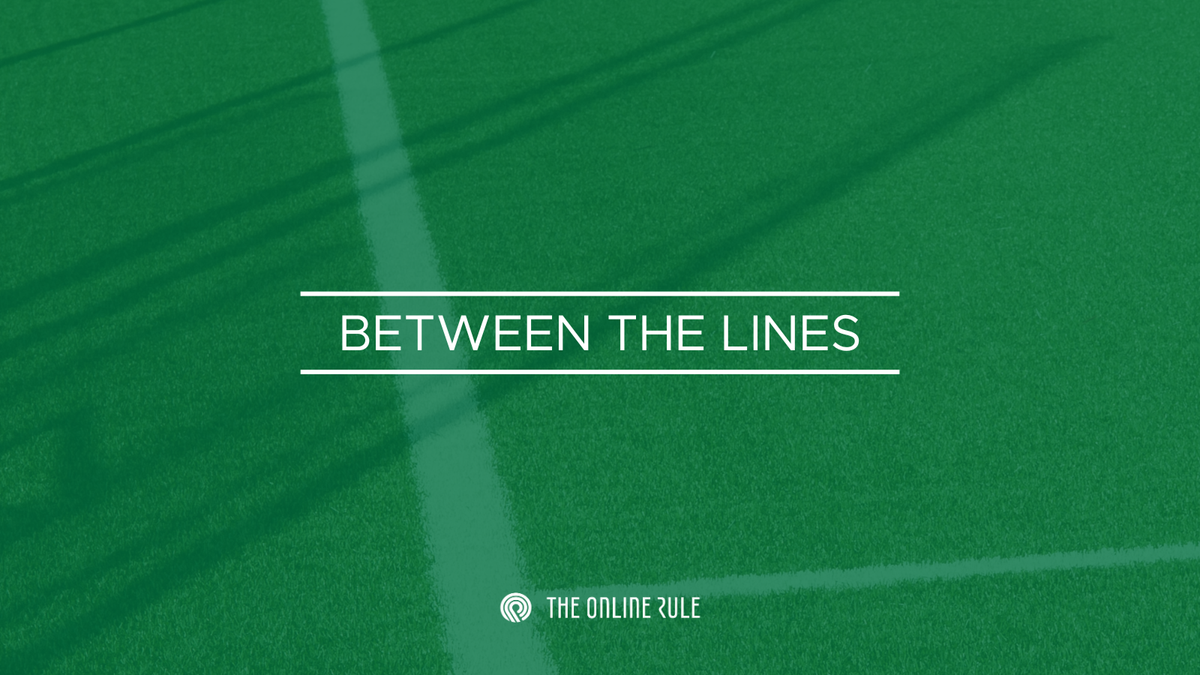
How to get started in football marketing
This week has seen the release of Getting Onside - A Practical Guide to Low-Cost Football Marketing by Ian Fitzpatrick.
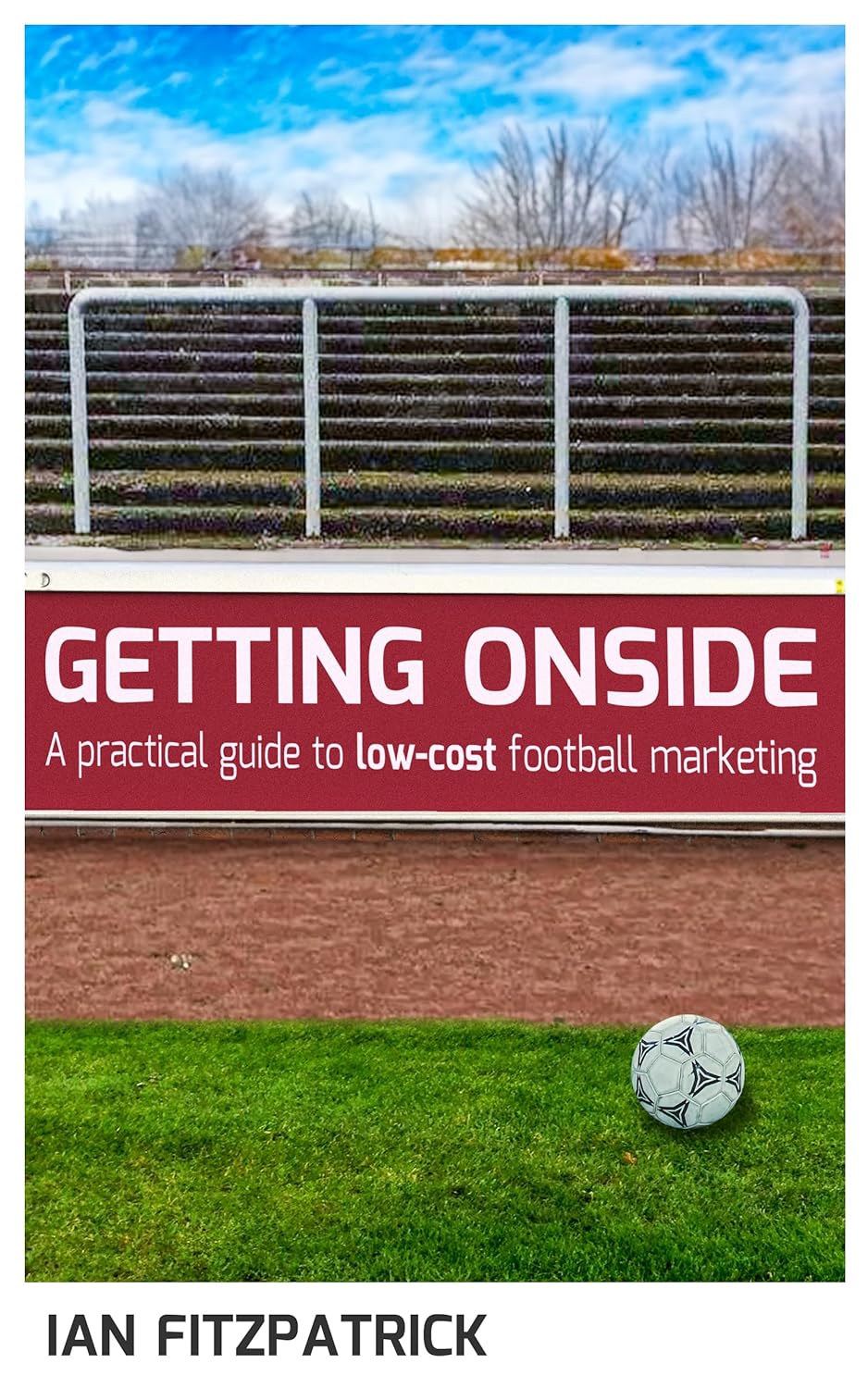
Ian is Stenhousemuir's Senior Marketing Manager, as well as working as a Senior Marketing Manager for Buzz Bingo. He's worked in football previously, spending two years as Clyde FC's Associate Director for Commercial and Marketing, and holds a few professional qualifications in marketing.
The book is a perfect guide to anyone looking to get started in the world of football marketing. It's full of practical advice, written from the perspective of someone who has very much been there and done that. If you're new to a sports marketing role, or you're very much a team of one, you'll find something to enjoy in the book.
It's split into three sections; one looking at short term basics, one covering medium term tactics that will take your content to the next level, and one aimed at helping you master marketing in the long term.
Some of the advice in the book is particularly refreshing; on one page Ian explains why match-related content isn't best suited to your Instagram feed. He also breaks down the purposes of each social channel and the best way to use them, as well as making a series of basic blank templates available to help with your planning.
It's worth pointing out that the book is only available on certain Kindle devices - it doesn't work on my Paperwhite, but it'll be fine on a phone or tablet running the Kindle app. You can grab your copy on Amazon below.
Ian also runs the Scottish Football Media Discord server which is open to anyone working in football media around the world. There are more than 150 members so far.
The Bundesliga's approach to email
I'm signed up to quite a few mailing lists for clubs and leagues around the world - apologies if I'm messing up your CRM - and the Bundesliga's emails always stand out.
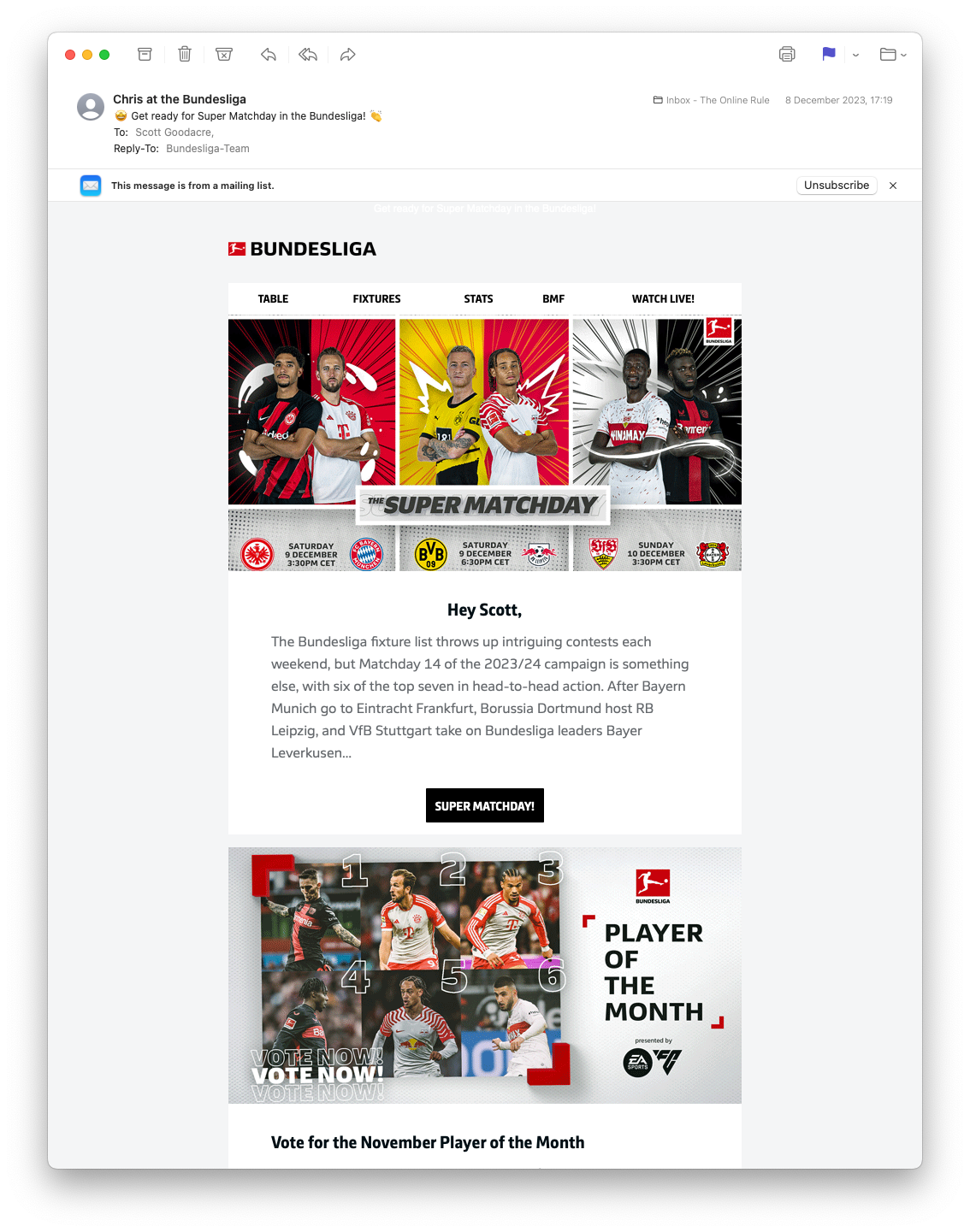
There's a lot I like about their approach. Firstly, it sticks to a solid weekly schedule. Consistency is good as people learn to expect something on certain days - like Michael Bochel's fortnightly Marketing Assist, or the one you're reading right now - and it also gives you a regular deadline to work towards.
Secondly, there's that 'from' line. This isn't a faceless Bundesliga admin, it's Chris at the Bundesliga. I might ignore emails from the league, but I'm not ignoring Chris. Last week it was Charlie. That personalisation adds an extra human element to things.
Also, seen that 'reply-to' line? It's not a cold 'noreply@' address; I can speak directly to the Bundesliga team (it's a crm@ address so I might not get a reply - and I have replied to test this theory out - but it doesn't look as unwelcoming).
The emoji in the subject line are a good touch that draw the eye and help the emails stand out in your inbox. I'd recommend reading this practical advice from Constant Contact about using emoji in your subject line too if it's an approach you're thinking of using - you'll particularly notice that the Bundesliga aren't using common ones to try and avoid spam filters.
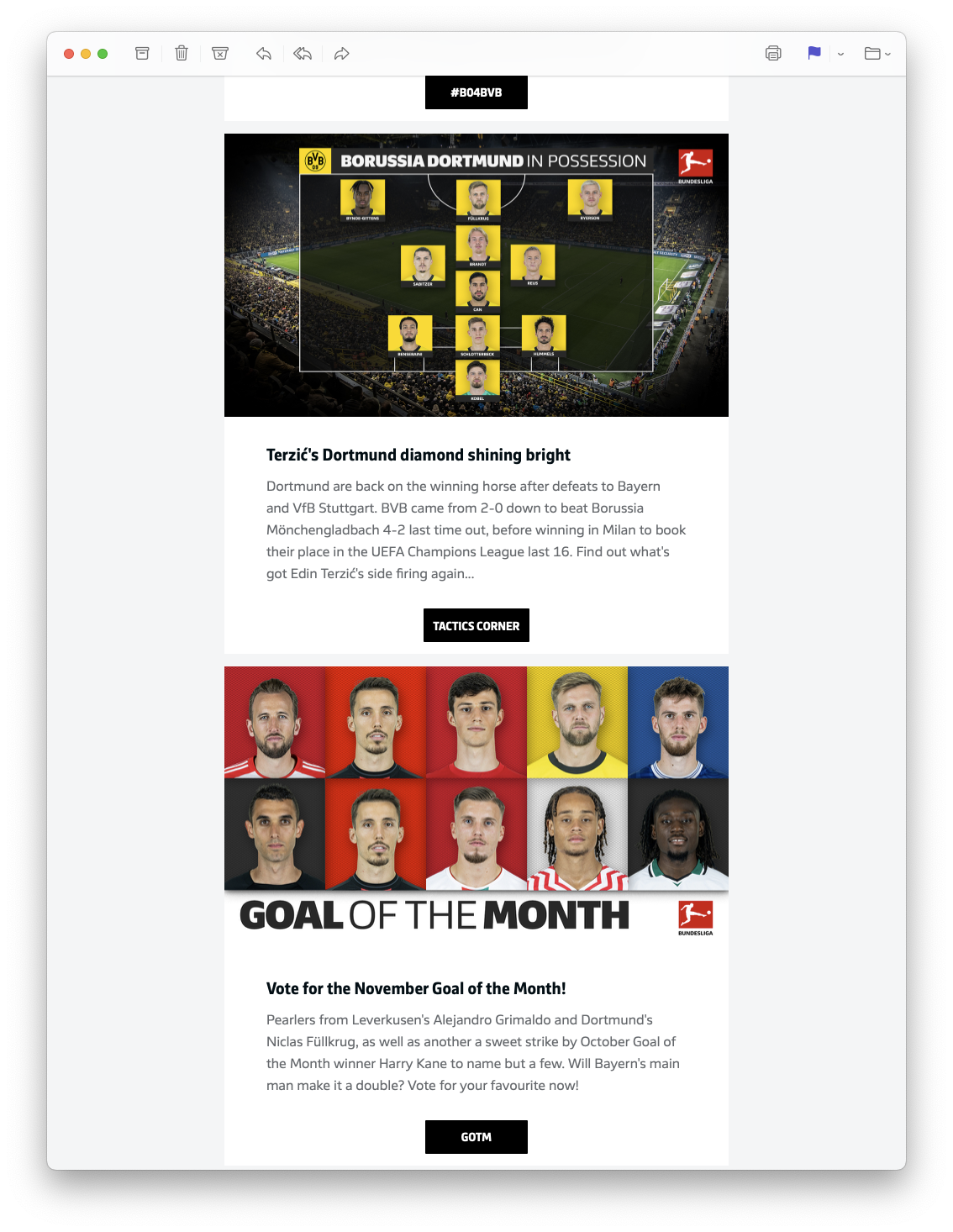
One final thing I like is in the screenshot above. They don't go with boring 'click here' CTA buttons, instead each one has some context. I know that I'm going to go to the tactics corner or goal of the month competition, for example. It's a good idea to tell people exactly where their click will take them.
An alternative approach
While the Bundesliga goes for a weekly magazine-style approach, MLS' is a bit different.
Called The Daily Kickoff, it's a daily look at the league's biggest stories. How they manage to get these out daily is beyond me, but they do.
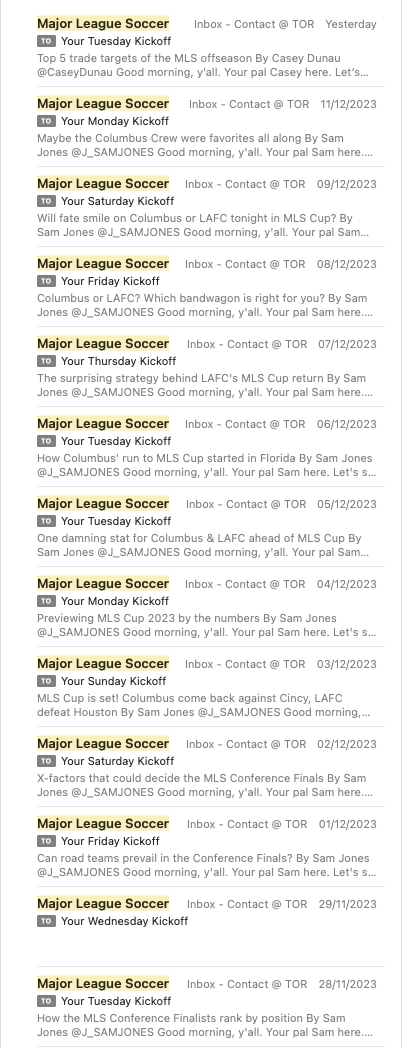
Looking at the last fortnight, they've missed two days. That's some good going. This lot have all been written by the same person, but the author does change every now and again.
When the playoffs were on they changed the subject to "Your Thursday (Playoff) Kickoff", which was a good touch.
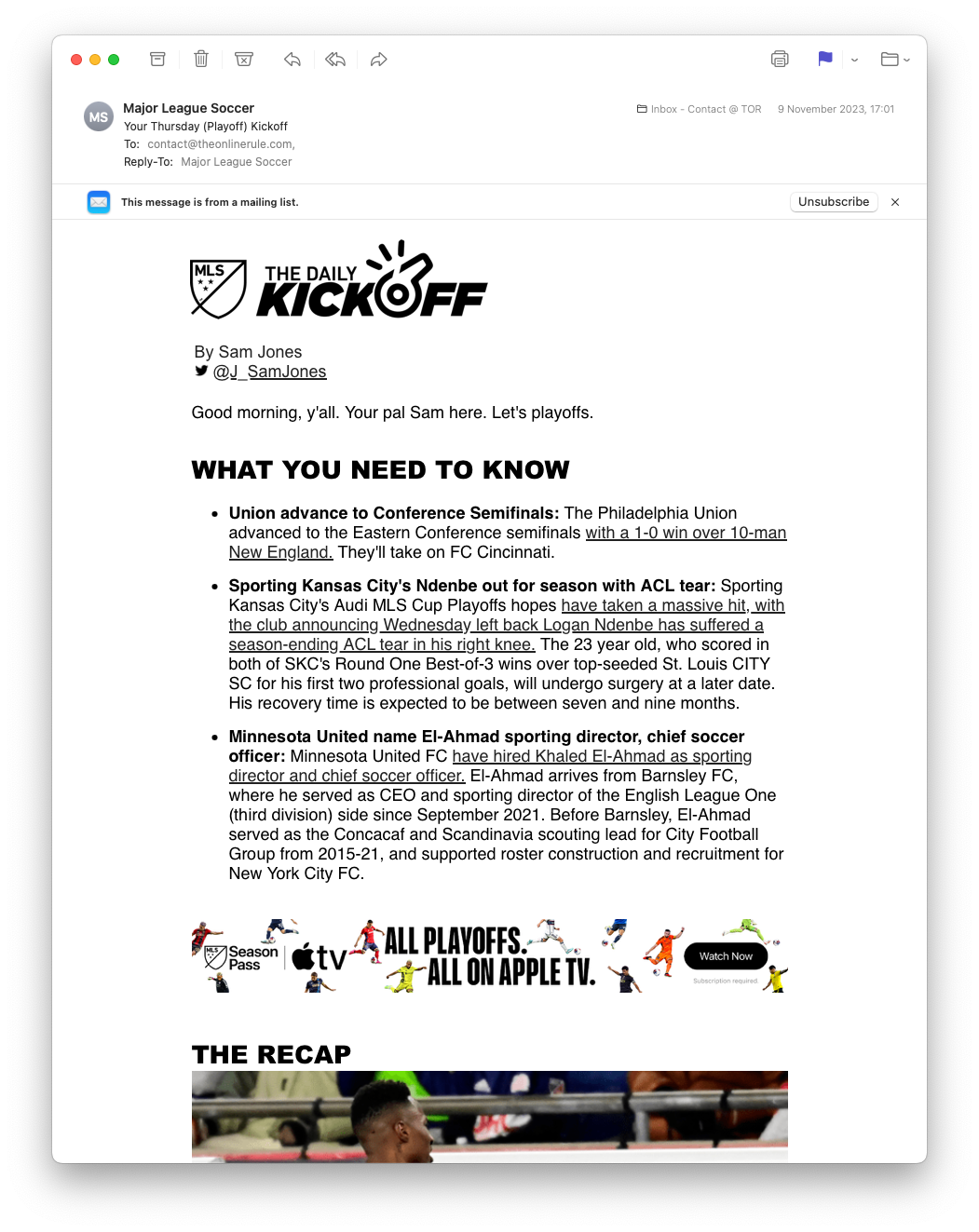
Now it's the close season, they're sticking with the daily approach and providing a summary of the league's news to help keep you up to date.
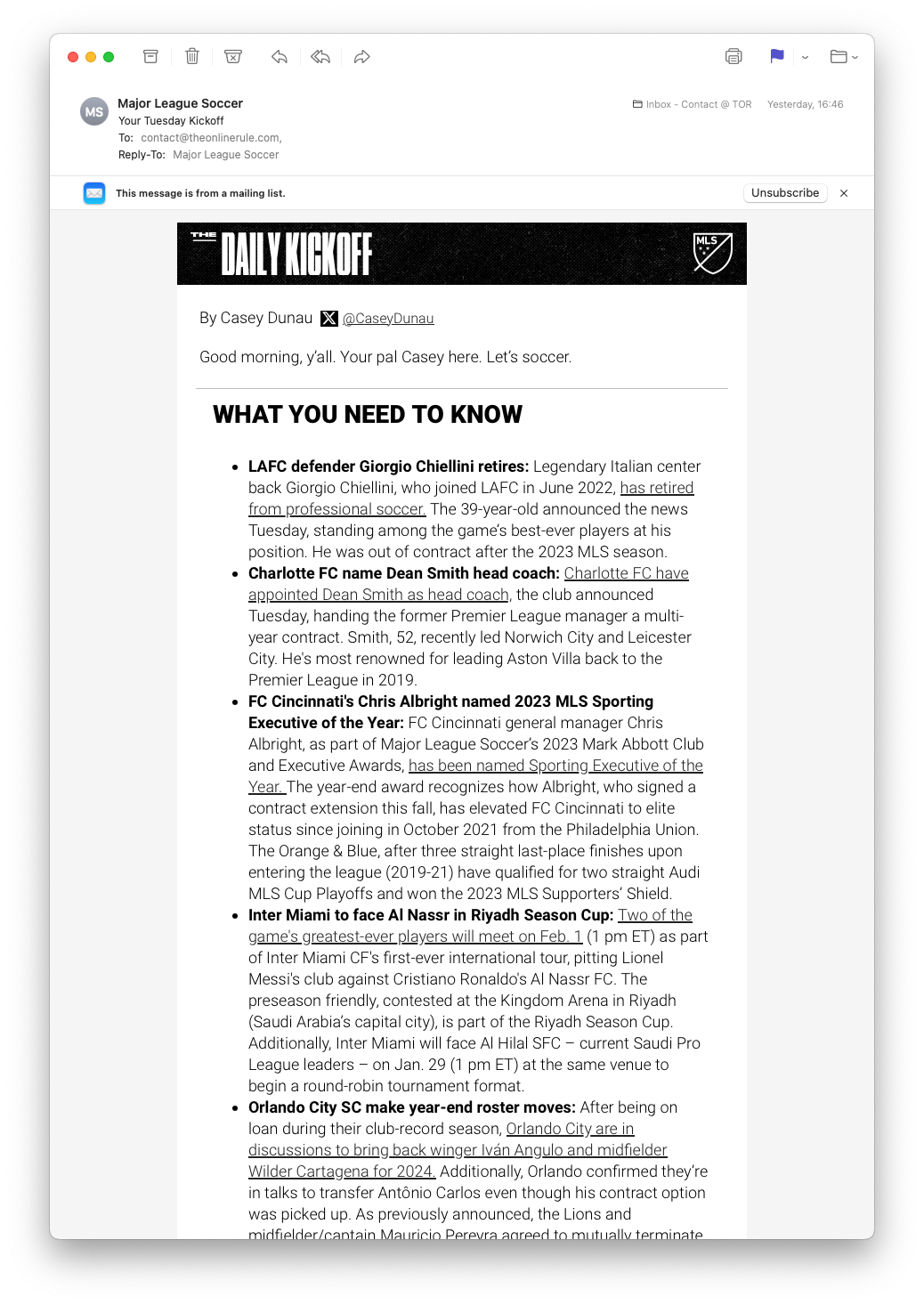
One difference between the MLS and Bundesliga is that the MLS includes more of a story in their newsletters. In yesterday's, for example, there was a full piece highlighting five players teams should look to trade for in 2024.
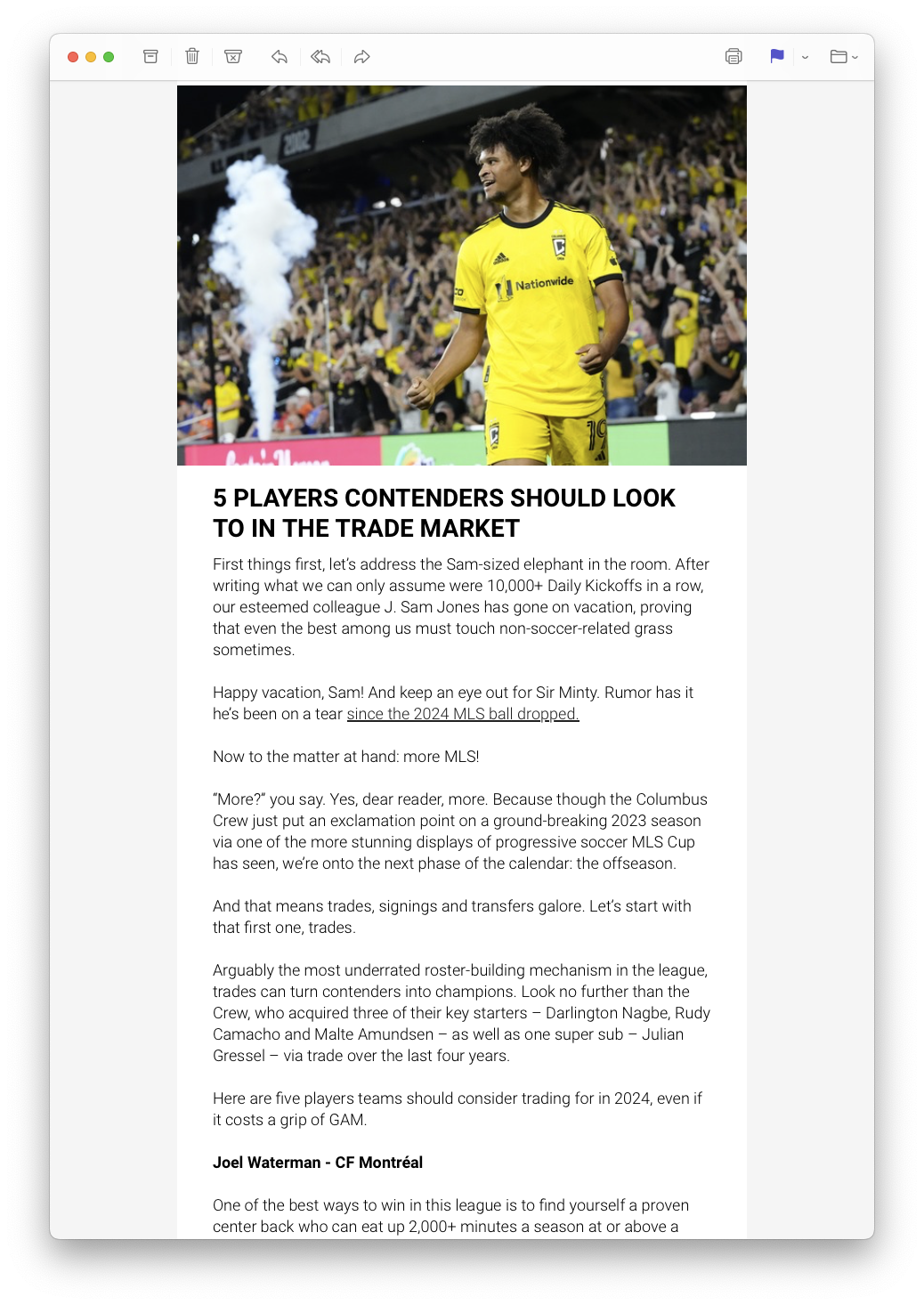
If you include more content like this in your mailings you've got a higher chance of having them read. Not everyone clicks through from emails, and if they know there's unique content in there then you've a chance of keeping them engaged for longer.
There's no right or wrong between the two approaches to email, but hopefully some food for thought.
Improving accessibility
The Royal National Institute of Blind People (RNIB) have partnered with leagues and clubs in the UK to help them improve the matchgoing experience for blind and partially sighted people.
The campaign is called See Sport Differently, and a best practice guide was created in collaboration with Arsenal, Everton, Wolves, Plymouth Argyle, Wrexham, Level Playing Field, the Premier League, and the EFL.
You can find out more about the campaign on the RNIB website, including accessing the guide. It contains advice on how to make your matchday programme accessible, as well as the importance of ensuring stewards and staff have the appropriate levels of training.
Two million people live with sight loss in the UK. It's nearly guaranteed that the improvements and considerations the RNIB have highlighted will make a difference to some of your fans.
They're currently running a 12 Days of Accessible Social Media Christmas campaign, which you can see on Threads below.
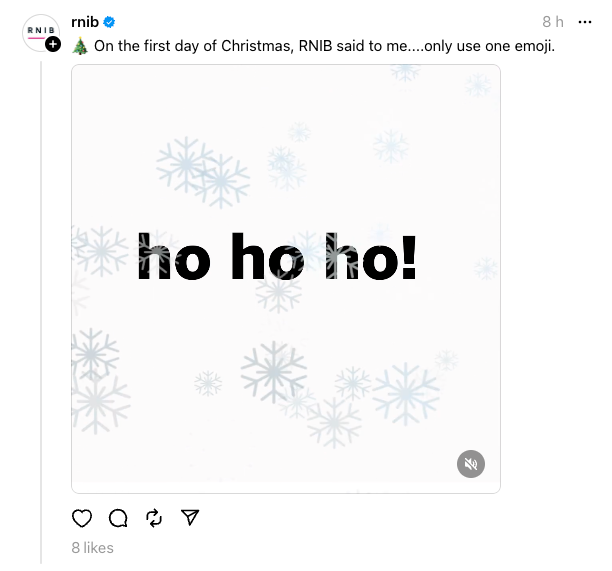
One thing we can do in marketing is working to make our content accessible too. The Accessible Social website has advice on how to optimise the things you post on social media to ensure they're able to be enjoyed by as many people as possible.
Personally? I'd like to see text written in alternative characters kicked into touch in 2024. These are the images that look like fonts, such as the phrase "Key dates for Christmas delivery" below. They're widely used, this was just the first example I found - it's more common on X than anywhere else.
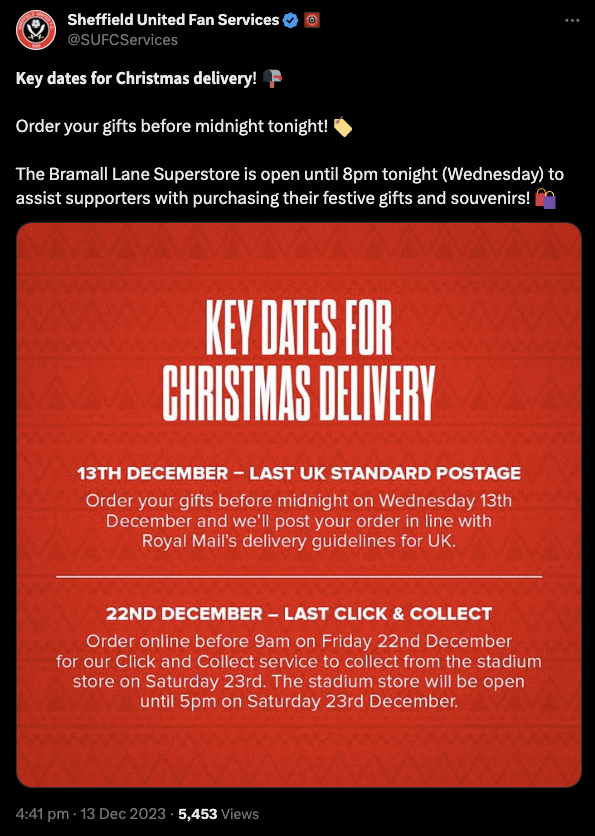
This page explains why they're a bad thing. In short: they're not able to be searched for, therefore don't register with algorithms, and often aren't compatible with screen readers and other assistive technology.
Hashtags come to Threads (kind of)
Like the headline says, the latest Threads update allows you to tag posts. You're allowed one tag per post, but it can have spaces in.
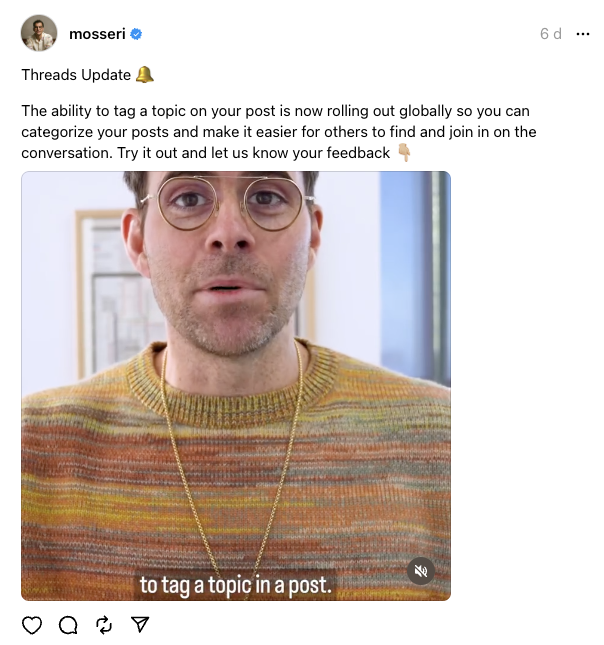
In other news, an EU launch is imminent for Threads. I'm looking forward to seeing if that helps usage take off.
The Fan Experience EXPERIENCE wraps up a third season
In my opinion, not enough sports marketers think outside of promotion. Enhancing the entirety of the matchgoing experience can pay dividends in the long-term. Happy fans stay longer, spend more, and come back time and time again.
Mark and the Fan Experience Company are on season 3 of their podcast. For this season they've explored every area of the fan experience, from the initial ticket booking process, to the area around a stadium, and what you can do during a game.
The final episode of this run talks about what you can do after the game has finished (full discloser: I'm on episode 4).
When writing this, the embed code wasn't displaying properly. If it doesn't work, click here to go to the show on Spotify.


